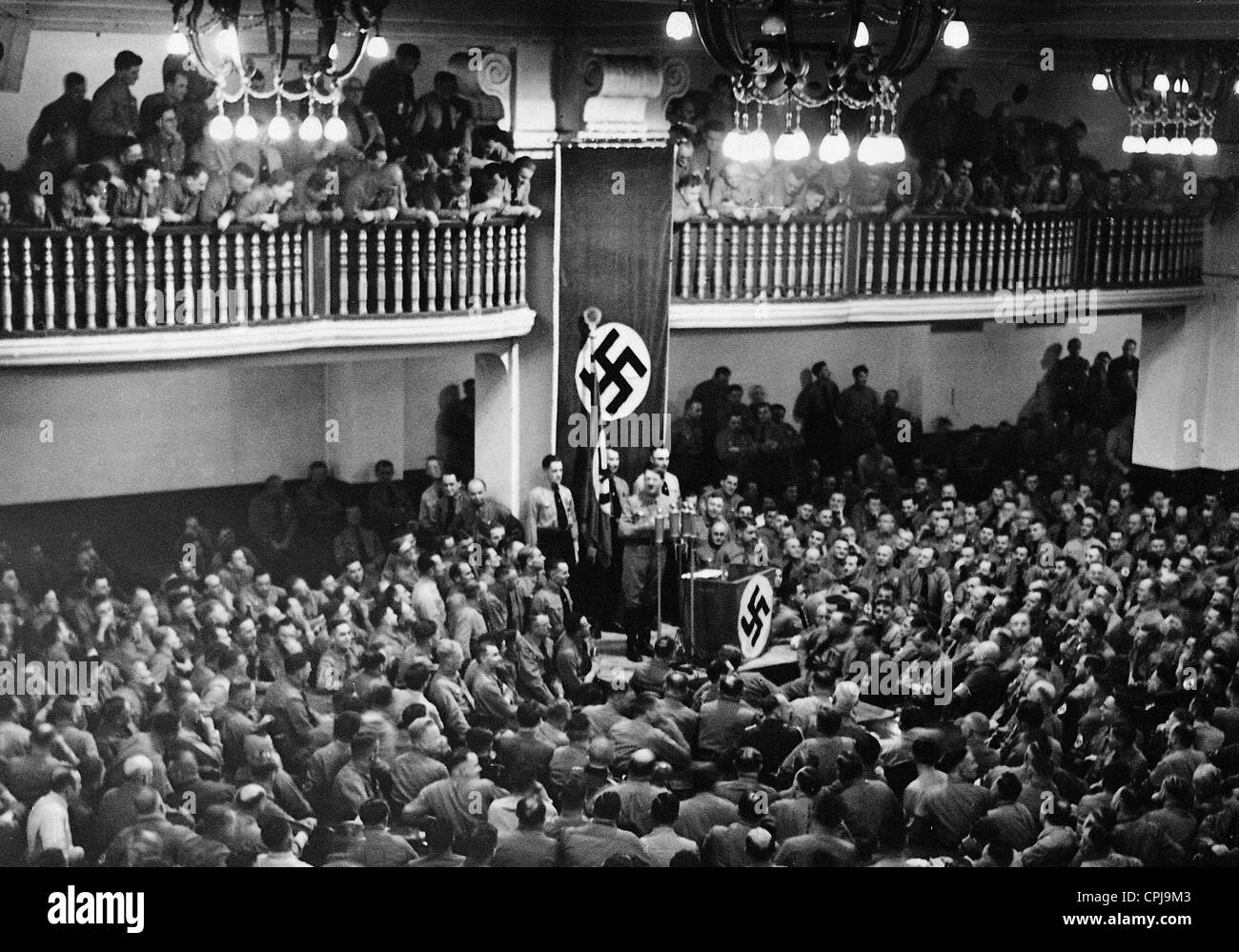A Munich Beer Hall’s Descent into Darkness
The Bürgerbräukeller, a once-vibrant beer hall in Munich’s Haidhausen district, stands as a chilling example of how seemingly ordinary places can become entangled with the darkest chapters of history. From its founding in 1885 as part of the Bürgerliches Brauhaus, later owned by Löwenbräu, the Bürgerbräukeller served as a central hub of Munich’s social life, its large halls filled with the sounds of laughter, music, and clinking beer glasses. However, the rise of the Nazi Party in the early 20th century cast a long shadow over this bustling establishment, transforming it into a stage for hate-filled rhetoric and a crucible of infamous historical events.
The Bürgerbräukeller and the Rise of Nazism
In the turbulent aftermath of World War I, the instability of German society and the allure of nationalist ideologies provided fertile ground for the Nazi Party’s growth. The Bürgerbräukeller, with its capacity to accommodate large crowds, became a crucial venue for the burgeoning party. From 1920 to 1923, the beer hall served as a platform for organizing, holding rallies, and disseminating propaganda, ultimately contributing to the Nazis’ increasing prominence on the political landscape. It was within these walls that Adolf Hitler honed his oratory skills, delivering fiery speeches that resonated with a growing segment of the German population. These gatherings were not merely social events; they were carefully orchestrated displays of political theater, designed to galvanize support and solidify the party’s identity.
The Beer Hall Putsch of November 8, 1923, forever cemented the Bürgerbräukeller’s place in history. This ill-fated coup attempt, launched by Hitler and his followers, aimed to overthrow the Bavarian government and seize control. The Bürgerbräukeller served as the launching point for this daring, yet ultimately unsuccessful, power grab. While the putsch ended in failure and Hitler’s arrest, the event paradoxically benefited the Nazi cause. The trial that followed provided Hitler with a national platform to articulate his vision, further amplifying his message and solidifying his image as a fearless leader. The putsch, though a tactical defeat, became a powerful symbol of Nazi defiance, skillfully manipulated by Hitler to gain sympathy and support.
Even after Hitler’s rise to power in 1933, the Bürgerbräukeller retained its significance for the Nazi regime. Hitler returned annually to commemorate the Beer Hall Putsch, delivering speeches that were not simply historical reflections but carefully crafted propaganda events designed to reinforce the Nazi Party’s control and influence over the German people. These gatherings served as powerful rituals of remembrance and reaffirmation, further solidifying the cult of personality surrounding Hitler and the Nazi ideology.
A Spark of Resistance: The Georg Elser Plot
Amidst the darkness of the Nazi era, a glimmer of hope emerged from an unexpected source. On November 8, 1939, almost exactly 16 years after the failed putsch, Johann Georg Elser, a carpenter driven by his conscience and a deep-seated opposition to the Nazi regime, made a daring attempt to assassinate Hitler within the very walls of the Bürgerbräukeller. Elser, acting independently, meticulously planned and executed his plot, demonstrating remarkable ingenuity and courage. He concealed a bomb within a pillar behind the speaker’s podium, hoping to end Hitler’s reign of terror. However, fate intervened. Hitler departed the event earlier than expected, narrowly escaping the blast. Elser was apprehended near the Swiss border and subsequently executed in 1945, just weeks before the war’s end. Though his attempt ultimately failed, Elser’s act of defiance stands as a powerful testament to individual resistance against tyranny, a stark reminder that even in the face of overwhelming oppression, individuals can act with extraordinary courage. Historians continue to debate the potential impact of Elser’s success, with some suggesting that it could have dramatically altered the course of World War II. Learn more about Volterre, a city with its own compelling history.
The Bürgerbräukeller’s Legacy: Memory and Ruin
The Bürgerbräukeller itself did not survive the ravages of World War II. Damaged by Allied bombing raids, it was eventually demolished in 1979, marking the end of a physical structure deeply intertwined with a tumultuous period in German history. The site now houses a residential and commercial complex, a stark contrast to the beer hall’s vibrant past. A memorial plaque commemorates Georg Elser’s courageous act, serving as a poignant reminder of the complex and often tragic events that unfolded within these walls.
The Bürgerbräukeller’s legacy extends beyond its physical existence. It serves as a potent reminder of the insidious nature of extremist ideologies and the importance of vigilance in safeguarding democratic values. The building’s history, from its convivial beginnings to its role as a Nazi platform, underscores how easily seemingly ordinary spaces can become instruments of political manipulation and instruments of hate. Today, the site encourages reflection on the fragility of democracy and the importance of historical memory in preventing the recurrence of such dark chapters.
Where was the Bürgerbräukeller Located?
The Bürgerbräukeller was located in the Haidhausen district of Munich, east of the Isar River. Originally a large complex, it featured several halls, a cellar, and a summer garden. Its size and central location made it a popular venue for a variety of social gatherings and, unfortunately, a prime target for political exploitation by the Nazi Party.
What Happened to Johann Georg Elser?
Johann Georg Elser, driven by his deep opposition to the Nazi regime, attempted to assassinate Adolf Hitler at the Bürgerbräukeller on November 8, 1939. His meticulously planned bomb plot failed due to Hitler’s unexpected early departure from the event. Elser was captured while attempting to flee to Switzerland and held prisoner by the Nazis until 1945, when he was tragically executed just weeks before the end of World War II.
How was the Munich Putsch a Success?
While the Munich Putsch of 1923 was a tactical failure for Hitler and the Nazi Party, it paradoxically contributed to their rise in several ways. The event brought national attention to their cause, provided Hitler with a platform to disseminate his ideology during his trial, and fostered a narrative of martyrdom that resonated with a segment of the German population. Furthermore, the annual commemorations of the Putsch at the Bürgerbräukeller served as powerful propaganda events, strengthening party unity and solidifying Hitler’s leadership.
















